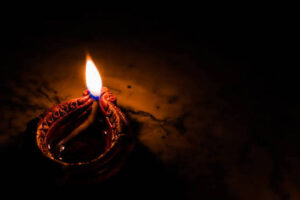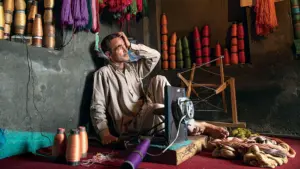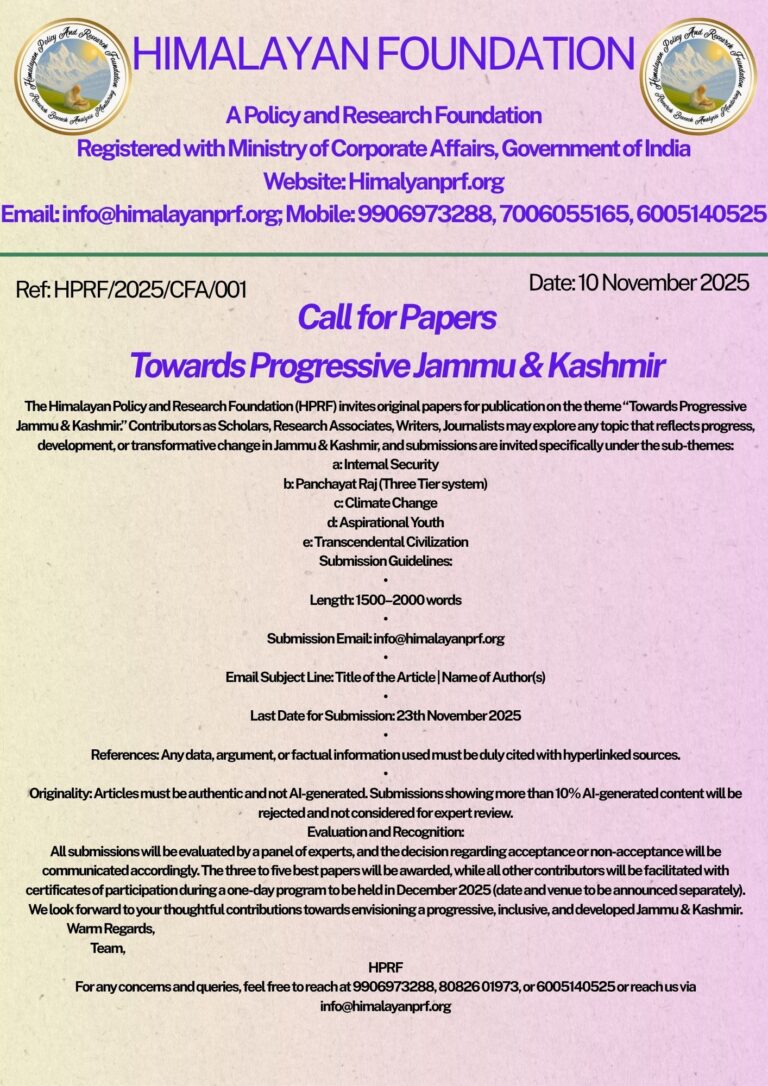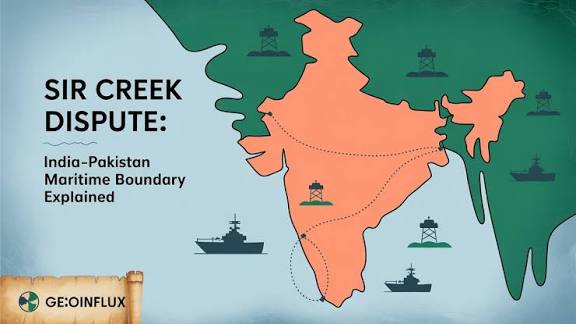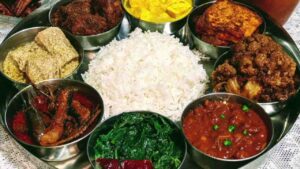By: Dr Musavir ( Independent Researcher)
History remembers armies, generals, treaties-but often buries the real warriors who held the line when survival itself was on the edge. In October 1947, when Pakistan-backed tribal militias stormed into the valleys of Kashmir with fire and bloodlust, the world saw men scramble for guns and villages burn. Yet in the shadows of destruction, in narrow lanes and isolated hamlets, Kashmiri women became the invisible force that refused to bow. They were not just protecting homes-they were defending life itself, and with it, the soul of Kashmir.
The invaders came armed, reckless, and merciless. They did not just want land; they wanted to terrorize, to strip people of dignity and identity. The princely state’s forces were weak, fragmented, and unprepared. Ordinary civilians, caught between militarized militias and political uncertainty, faced annihilation. It was in this crucible that women shed the false comfort of domesticity. They picked up rifles when available, wielded knives, sticks, and even kitchen implements. They ran messages through dangerous terrain, scouted enemy positions, and, in some cases, confronted the raiders face-to-face, with nothing but courage and desperation as weapons.

In the turbulence of 1947, when Kashmir was torn apart by the Pakistan-backed tribal invasion, women did not remain silent spectators to the disintegration of their homeland. They stood, instead, at the very frontlines of moral and physical defense. The formation of the Women’s Self-Defense Corps became one of the most striking assertions of collective will in that chaotic autumn. Among its volunteers was Zooni Gujjri, a woman from Srinagar’s working-class neighborhood, who rose to prominence through sheer courage rather than social position. She and many others like her patrolled streets, carried messages, and guarded localities at a time when even trained men hesitated to move freely. Alongside her stood Krishna Misri, barely fourteen, whose initiation into the militia marked her awakening to political consciousness – a consciousness born not in classrooms, but amidst the immediacy of invasion and fear.
Beyond these remarkable figures, Begum Zainab and Begum Akbar Jahan represented the political dimension of women’s resistance. They mobilized support, organized relief, and kept the idea of freedom and communal unity alive when violence threatened to consume it. Their presence symbolized not just participation but leadership -a deliberate insertion of women into what had long been considered the male domain of politics and struggle. Krishna Mehta, the wife of a civil servant stationed in Baramulla, provided one of the most haunting testimonies of that period. Having witnessed the destruction unleashed by the raiders, her later writings became both an archive of trauma and a moral reminder of what Kashmir endured.
In villages like Baramulla and Pulwama, women were not waiting for rescue-they were creating it. They set ambushes, blocked narrow paths, and coordinated with men who were fighting alongside them. They knew the land intimately-the bends of the rivers, the hidden alleys, the secret paths through orchards. They used this knowledge to trap, delay, and confuse the invaders. Children clung to their skirts, yet these women moved with lethal precision, knowing the cost of failure could be death-not just theirs, but the deaths of every person in the village.
Beyond combat, women became the messengers, spies, and strategists of resistance. With men stretched thin defending positions or organizing armed groups, women carried vital information between villages. They disguised reconnaissance as mundane errands, slipping past raiders to warn neighbors, guiding people to safety, and sometimes lying, deceiving, or bargaining to save lives. Every message carried by a woman in those days could mean the difference between a massacre and survival. Their intelligence networks were informal, improvised, but ruthlessly effective.
Even in logistics, their role was monumental. Food, medicine, clothing-everything had to be moved, rationed, and distributed under the threat of death. Women became lifelines, running across broken fields, often under fire, ensuring fighters could hold positions and families could survive. Their hands fed the hungry, dressed the wounded, and lifted the morale of men who had never known terror like this before. In every act, they showed a strength that was as strategic as it was moral. They were the backbone of resistance, though history rarely remembers them.
The courage of Kashmiri women was not abstract-it was personal, raw, and sacrificial. Mothers shielded their children with their bodies. Sisters bargained with raiders to save brothers. Daughters offered themselves as hostages to allow families to escape. These were not acts of heroism for honor or recognition-they were acts of desperate survival, carried out with clarity, cunning, and fearlessness. One misstep could mean rape, mutilation, or death, yet these women acted with a focus born from love, necessity, and unbroken pride.
Resistance was also cultural. Women hid manuscripts, sacred texts, jewelry, and artifacts. They protected the memory of their communities while bullets tore through homes and streets. They taught children in secret, recited prayers, and maintained a moral front in the face of barbarity. Even as chaos threatened to erase villages from memory, these women ensured that the identity of Kashmir endured, that children knew who they were and where they came from, that history would survive despite the invaders’ brutality.
What makes their story extraordinary is that this courage was ordinary, part of life itself. It came from centuries of women running households, organizing communities, and maintaining social order under the shadow of political uncertainty. That knowledge-of survival, of negotiation, of strategy-became lethal when combined with desperation. The tribal invasion did not just test men with guns; it tested the very fabric of society. Women did not flinch. They became warriors, tacticians, caregivers, and preservers of memory-all at once.
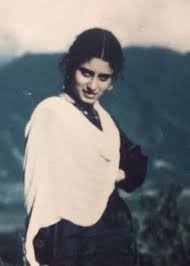
Yet, history has been cruel to them. The narratives of 1947 focus on generals, on treaties, on men in uniform. Women are footnotes or absent entirely. But the truth is stark: without their courage, without their calculated defiance, countless communities would have vanished, entire cultures could have been lost, and the human toll would have been far greater. Theirs was not heroism that sought applause-it was relentless, tactical, and unforgiving in its necessity.
Kashmiri women during this invasion remind us that war is never just fought on the battlefield. It is fought in homes, in alleys, in whispers and secret paths. It is fought in the hands that feed the hungry under fire, in the arms that lift the wounded, and in the hearts that refuse to surrender even when surrounded. They were the unseen frontline, and their resistance was tougher, smarter, and more consequential than any conventional army could claim.
The stories of Kashmiri women’s resistance during the 1947 invasion are not confined to broad strokes; they are etched in villages, in lanes, in orchards, and in homes that bore witness to courage few could imagine. In Baramulla, one of the first towns to face the tribal incursion, women became the first line of warning. Mothers climbed rooftops to observe the movements of armed militias, while daughters ran through back alleys delivering urgent messages to neighboring households. Villagers recall how women used buckets of water, smoke from cooking fires, and even rolling stones to delay the raiders’ advance, buying critical hours for evacuation. These were not acts of panic-they were calculated, fearless defiance, executed under the constant threat of death.
In Kashmir, women were known to confront raiders directly. When invaders tried to force entry into homes, they were met by women wielding whatever tools were at hand-axes, knives, and blunt instruments-often creating confusion among the attackers and saving lives. There were mothers who threw themselves over children to shield them from bullets, sisters who hid brothers in barns and underground cellars, and grandmothers who guided groups of children through forests to safety, sometimes at the cost of their own lives. These were not symbolic gestures; they were frontline acts of tactical resistance, executed with precision and moral clarity.
In the outskirts of Srinagar, women’s role in intelligence was particularly crucial. They moved freely in ways men could not, often blending into marketplaces or neighborhood routines to observe enemy movements. They memorized troop numbers, reported the locations of armed posts, and conveyed strategic warnings-all without drawing suspicion. One account tells of a woman who, under the guise of collecting firewood, followed a group of raiders for several kilometers, later informing villagers of the militia’s approach through a network of women messengers. These actions directly saved families from slaughter, demonstrating the critical operational impact of women in resistance.
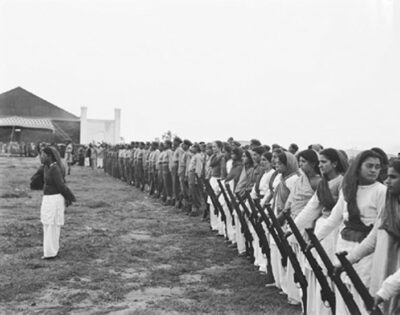
Women were also the bearers of logistical lifelines. Displacement and scarcity were rampant; raiders burned granaries and looted homes. In these conditions, women organized clandestine kitchens, rationed limited supplies, and ensured that fighters and refugees remained fed and clothed. They carried water from distant sources, tended to the sick, and treated wounds with whatever was available. Their endurance was relentless. One villager recalled women traveling miles through snow and rain to deliver supplies, while keeping children and elders safe, sometimes returning at night to fight again alongside men in defense of the village. This combination of sustenance and strategy illustrates the centrality of women in survival itself-not peripheral, but foundational.
Sacrifice and courage went beyond the practical. They were moral weapons against the brutality of the invaders. Women negotiated with raiders, often using deception or bluff to prevent killings. Some offered themselves in hostage situations to allow children and elders to escape, knowing that the cost could be torture or death. Others hid families in cellars or attics, standing watch for hours, enduring hunger, cold, and terror to ensure survival. Each act was a statement: Kashmir would not be broken, even if its women were put in the most impossible positions.
Cultural preservation was another front of resistance. The invaders sought not just land but the erasure of memory. They looted homes, desecrated places of worship, and attempted to intimidate communities into submission. Women became custodians of history and identity. They hid manuscripts, religious texts, jewelry, and artifacts, sometimes under floors or behind walls, and ensured that children continued to learn the stories, songs, and prayers of their heritage. This preservation of culture was a form of defiance as potent as any armed resistance. It sent a message that Kashmir’s identity could not be annihilated, that its soul would survive through its women.
Beyond individual heroism, what is remarkable is the systematic nature of women’s involvement. These were not one-off acts; they formed informal networks that coordinated resistance across villages, towns, and regions. Mothers, sisters, daughters, and grandmothers became nodes in a survival web-distributing intelligence, organizing supplies, protecting the vulnerable, and reinforcing morale. Their actions demonstrate a collective agency that is often invisible in histories dominated by male narratives, yet it was indispensable for survival.
The consequences of these acts were profound. Without women, resistance would have faltered; entire communities might have been annihilated or scattered. Oral histories emphasize that every household owed survival to the courage and cunning of women, whether in direct combat, covert intelligence, or logistical and moral support. They transformed fear into action, despair into strategy, and vulnerability into an unyielding will to fight.
The human dimension of their courage cannot be overstated. These women were ordinary in appearance but extraordinary in action. They were mothers who became warriors, daughters who became messengers, sisters who became strategists. Their bravery was not a spectacle for history books-it was a raw, lived reality, a daily struggle against imminent death. They did not seek recognition, medals, or headlines; they sought only to protect life, family, and home. And in doing so, they became the invisible guardians of Kashmiri society.
Their legacy persists in the consciousness of Kashmir today. It is reflected in oral traditions, in family stories, and in the collective memory of communities that survived the invasion. Modern scholarship has started to recognize their role, yet mainstream narratives remain incomplete without acknowledging the relentless courage, intelligence, and sacrifice of women during 1947. Their actions redefine heroism, showing that it is not confined to armies, generals, or political leaders-it lives in mothers, daughters, and sisters who rise to defend everything they hold dear when the world turns against them.
In reflecting on these women, one realizes that their courage was multidimensional: it was tactical, moral, and existential. They fought with weapons, with wits, and with unbreakable spirit. They transformed fear into resilience, chaos into strategy, and vulnerability into collective strength. Their participation was decisive, their sacrifices profound, and their legacy enduring. To ignore them is to distort history; to honor them is to understand the true measure of resistance.
The story of Kashmiri women in 1947 is a lesson for all time. It tells us that in the darkest hours, courage is not just about wielding a weapon-it is about taking responsibility when the world fails, standing firm when others flee, and refusing to surrender even when the odds are insurmountable. Their struggle was both physical and moral, immediate and enduring. Their resistance was not an act of defiance for glory-it was the unflinching assertion of life itself.
Today, as Kashmir continues to grapple with political, social, and security challenges, the courage of these women remains a benchmark. It reminds us that resistance is not a privilege of armies or politicians but a duty of every human being faced with existential threat. Their stories compel recognition of the human spirit, its capacity for resilience, and the indispensable role of women in shaping the destiny of societies under siege. Kashmiri women in 1947 were warriors, strategists, and custodians of identity. They were fierce, uncompromising, and relentless. They resisted not just invaders, but the erasure of their people, their culture, and their memory. Their courage was raw, unpolished, and deeply human-an example of resistance that cannot be captured by statistics or formal histories alone. It is a story of blood, sweat, tears, and unbroken will. It is a story that demands to be told, remembered, and honored.



